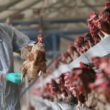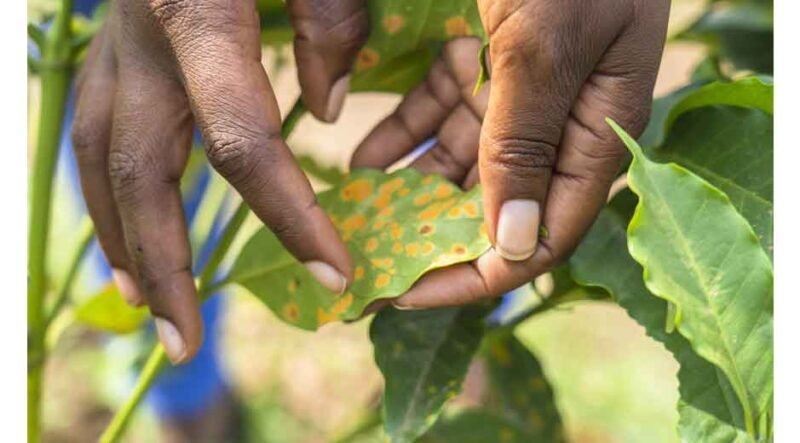Coffee has long been a defining crop of the Sipi Falls region, where the unique climate and altitude create ideal conditions for producing high-quality beans. Generations of farmers have relied on coffee cultivation not only as a livelihood but also as a cultural tradition that sustains their communities. However, climate change is increasingly threatening this balance, reshaping the conditions under which coffee can thrive. Rising temperatures, unpredictable rainfall, and the spread of pests and diseases are all making it increasingly difficult for farmers to maintain the quality and yield for which the region is known. These changes are forcing growers to adapt in ways that challenge both their economic stability and the sustainability of their farming practices.
Shifting weather patterns and coffee growth
The biggest challenge facing Sipi Falls coffee farmers is the disruption of rainfall patterns and temperature shifts. Coffee plants are susceptible to climate, requiring a delicate balance of warmth, rainfall, and cool nights to develop their unique flavor profile. In recent years, irregular rains have disrupted the flowering and ripening cycles, leading to lower yields and inconsistent harvests. Prolonged dry spells followed by heavy storms have also damaged crops and eroded fertile soil, further reducing productivity. These unpredictable conditions make it difficult for farmers to plan their planting and harvesting schedules, undermining efficiency and consistency. For those cultivating Uganda sipi falls coffee, the struggle to preserve traditional quality while adapting to new climate realities has become increasingly urgent. Farmers who once relied on steady seasonal cycles must now adjust their practices to cope with shrinking profits and rising uncertainty.
Rising pests and diseases are threatening global food supplies.
Another impact of climate change on coffee farms in Sipi Falls is the rise of pests and diseases that thrive in warmer conditions. Coffee berry disease and leaf rust, once limited by cooler climates, have become more widespread and more complex to control as temperatures rise. Insects such as the coffee borer beetle are also expanding into higher elevations, where they previously could not survive. These pests directly attack coffee plants, reducing yield and damaging bean quality. For farmers already facing the challenges of inconsistent rainfall and soil erosion, the added burden of combating pests places a significant strain on their resources. Chemical treatments can be costly and environmentally harmful, leaving many farmers with limited options for sustainable solutions. The spread of diseases not only threatens current harvests but also undermines the long-term viability of coffee farming in the region, jeopardizing livelihoods that have been built over generations.
Economic pressure on farming communities
The economic consequences of climate change for Sipi Falls coffee farmers are significant. Reduced yields and inconsistent quality lead to lower incomes, while costs rise as farmers attempt to adapt their practices. Investments in irrigation systems, pest management, and soil conservation require money that many smallholder farmers simply do not have. As a result, families may struggle to pay school fees, access healthcare, or reinvest in their farms. The global coffee market also places additional pressure, as buyers demand consistency that is increasingly hard to deliver under changing conditions. With fewer beans reaching the market, competition intensifies, and small-scale farmers often find themselves at a disadvantage. These financial challenges ripple through the community, affecting not only individual households but also local economies that heavily rely on coffee production. The stress of climate change is therefore not just environmental but deeply social and economic in nature.
Adaptation and sustainable farming practices
Despite these challenges, many farmers at Sipi Falls are working to adapt through innovative and sustainable practices. Agroforestry, which involves planting shade trees alongside coffee plants, is one approach that helps regulate temperature, conserve soil, and provide additional income through fruit or timber. Farmers are also experimenting with drought-resistant coffee varieties that can withstand harsher conditions; however, these options may take several years to integrate into local farming systems fully. Community-led initiatives are helping to share knowledge and resources, enabling farmers to address issues such as water conservation and pest control collectively. Partnerships with organizations focused on sustainability are also bringing training and support to help farmers adopt eco-friendly solutions. While adaptation is not easy, these efforts demonstrate the resilience of the farming communities. The commitment to preserving coffee production at Sipi Falls highlights the profound connection between the crop and both the region’s identity and survival.
Long-term implications for Sipi Falls coffee
The long-term impact of climate change on coffee farms in Sipi Falls remains uncertain, but the risks are clear. If current trends continue, the region may see declining production and a shift in the suitability of land for coffee cultivation. Farmers who cannot adapt may be forced to abandon coffee altogether, turning to alternative crops that are less profitable and less tied to the region’s identity. This would not only affect the farmers but also alter the reputation of Sipi Falls as a coffee-producing hub. The loss of traditional coffee farming could also impact tourism, as visitors often come to experience the coffee culture alongside the natural beauty of the falls. Ensuring the future of coffee in this area will require a combination of farmer resilience, community cooperation, and external support to manage the environmental and economic pressures of climate change.
Climate change is profoundly reshaping coffee farming at Sipi Falls, affecting everything from disrupted weather patterns and the emergence of new pests to creating economic pressures that strain entire communities. Farmers are facing a future where traditional practices may no longer be enough to sustain both yields and quality, forcing them to adapt with innovative solutions. While challenges are steep, the resilience of local farmers and their willingness to adopt sustainable practices offer hope for preserving coffee as a cornerstone of life in Sipi Falls. Protecting this crop is about more than economics—it is about preserving cultural heritage and the identity of a community that has long thrived on coffee cultivation. With continued adaptation and broader support, there remains the possibility that coffee farming in Sipi Falls can withstand the challenges of a changing climate and remain an enduring part of the region’s legacy.









